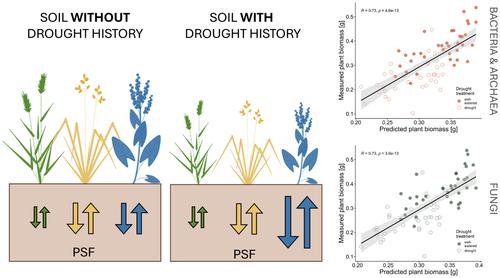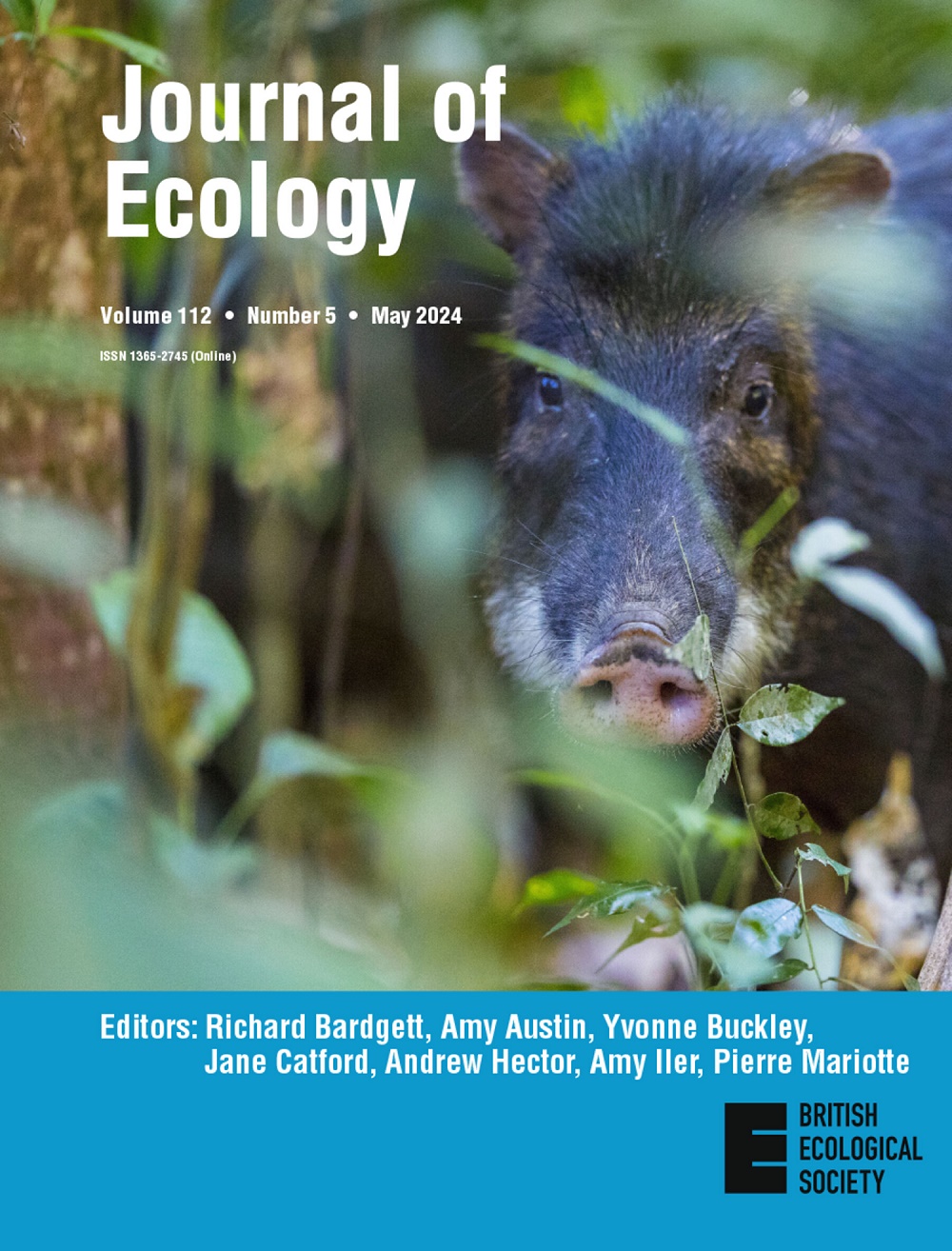Drought legacy effects on plant growth and plant–soil feedback are mediated by soil microbial communities independently of root exudates and root litter
IF 5.6
1区 环境科学与生态学
Q1 ECOLOGY
引用次数: 0
Abstract

干旱遗产对植物生长和植物-土壤反馈的影响是由土壤微生物群落介导的,而不依赖于根分泌物和根凋落物
极端干旱改变了世界范围内的植被动态,其影响往往在干旱结束后仍会持续。土壤微生物群落介导的间接干旱效应可以在干旱恢复期间继续影响植物生长,并可能影响植物-土壤反馈(PSF),即物种通过其根际微生物群对其自身生长的影响。植物对土壤的输入的变化,如根渗出物和凋落物,可能通过土壤细菌和真菌群落的变化来驱动这些干旱遗留效应。通过三个阶段的温室试验,我们评估了干旱遗留对三种常见草地植物生物量和PSF的影响。在第一个调节阶段,土壤在干旱和环境条件下直接由植物调节。在第二个调节阶段,土壤通过添加条件土壤接种物或根渗出物或第一阶段由干旱或非干旱植物产生的根凋落物来调节。在反馈阶段,将一组新植物生长在由相同物种调节的土壤中,并将其与所有土壤调节类型中由另一物种调节的土壤进行比较,并将其生物量与土壤微生物群落数据联系起来。我们发现,只有植物调节土壤,而不是接种物、渗出物或凋落物,对植物生长产生一致的负干旱遗留效应,这与微生物生物量降低和细菌和真菌群落组成的变化有关。我们可以鉴定出一组在干旱和丰水土壤中丰度不同的真菌和细菌分类群,并能准确预测植物的生长情况。植物条件土壤PSF在不同物种间存在差异,但仅受干旱影响。这种模式不会通过添加接种物、根渗出物或根凋落物而重现。合成。结果表明,干旱对植物生长的间接限制不是通过根系分泌物或凋落物介导的,而是通过改变微生物生物量和群落组成来实现的。这些发现表明,土壤微生物群落的持续变化阻碍了植物从极端干旱中恢复。
本文章由计算机程序翻译,如有差异,请以英文原文为准。
求助全文
约1分钟内获得全文
求助全文
来源期刊

Journal of Ecology
环境科学-生态学
CiteScore
10.90
自引率
5.50%
发文量
207
审稿时长
3.0 months
期刊介绍:
Journal of Ecology publishes original research papers on all aspects of the ecology of plants (including algae), in both aquatic and terrestrial ecosystems. We do not publish papers concerned solely with cultivated plants and agricultural ecosystems. Studies of plant communities, populations or individual species are accepted, as well as studies of the interactions between plants and animals, fungi or bacteria, providing they focus on the ecology of the plants.
We aim to bring important work using any ecological approach (including molecular techniques) to a wide international audience and therefore only publish papers with strong and ecological messages that advance our understanding of ecological principles.
 求助内容:
求助内容: 应助结果提醒方式:
应助结果提醒方式:


